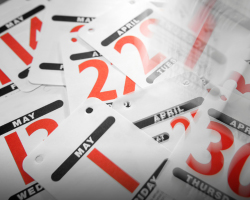Exploring the Dynamic Landscape of Forex Trading: Unveiling the Various Trading Styles

In the vast and fast-paced world of foreign exchange (forex) trading, success often hinges on the trader's ability to adopt a trading style that complements their unique personality, risk tolerance, and financial goals. The foreign exchange market, renowned for its liquidity and accessibility, provides traders with diverse opportunities to capitalize on the fluctuations of global currencies. This article delves into the intriguing realm of forex trading styles, shedding light on the different approaches employed by traders to navigate this ever-evolving financial landscape.
With an assortment of trading styles available, each varying in its strategies, time frames, and market analysis techniques, traders must thoroughly comprehend their distinct characteristics to make informed decisions. Whether one seeks rapid and intense market involvement or prefers a more relaxed and patient approach, there exists a suitable trading style for every individual.
Forex Trading Strategies and Styles
Forex trading offers various strategies and styles to suit different trading preferences and risk tolerances. Here are some of the most common ones:
Scalping
Scalping is a high-frequency trading style where traders aim to attain small yield from numerous quick trades throughout the day. Scalpers usually hold positions for a very short time, ranging from a few seconds to a few minutes. They focus on exploiting small price movements and often rely on technical indicators to identify entry and exit points. Scalping requires a lot of time, attention, and discipline, as well as a reliable and fast execution platform to take advantage of small price differentials.
Day Trading
Day trading involves executing trades within the same trading day, with all positions being closed before the market closes. Day traders seek to capitalize on intraday price movements and are less concerned with long-term trends. They may use technical analysis, chart patterns, and market indicators to make decisions. Day trading requires a good understanding of market dynamics, risk management, and the ability to act quickly.
Swing Trading
Swing trading involves holding positions for several days to weeks, aiming to benefit from short- to medium-term price swings or trends. Swing traders use technical analysis to identify potential entry and exit points based on price patterns, support and resistance levels, and other indicators. This style allows traders to take advantage of larger price movements while avoiding the noise and quick fluctuations of intraday trading.
Position Trading
Position trading is a long-term trading style where traders hold positions for weeks, months, or even years. Position traders focus on major trends and market fundamentals and tend to ignore short-term price fluctuations. This style requires a more patient approach and a willingness to withstand wider price swings. Position traders often perform extensive fundamental analysis to identify strong market trends and potential entry points.
Each trading style has its advantages and disadvantages, and traders should choose a style that aligns with their personality, time availability, risk tolerance, and level of experience. Additionally, no trading style guarantees consistent earnings, and all styles require proper risk management and a well-defined trading plan to succeed in the forex market.

How to Choose the Right Forex Trading Strategy for You?
Choosing the right forex trading strategy is crucial for your success as a trader. Here are some steps to help you select a strategy that suits you:
- Understand Your Trading Goals: Determine what you want to achieve with forex trading. Are you looking for quick returns with high-frequency trading, or are you more interested in long-term growth and stability? Knowing your goals will help narrow down suitable strategies.
- Assess Your Risk Tolerance: Forex trading involves risk, and different strategies come with varying levels of risk. Assess your risk tolerance honestly, and choose a strategy that aligns with your comfort level. For example, scalping and day trading can be more intense and stressful, while position trading may require more patience and tolerance for larger drawdowns.
- Consider Your Time Availability: Forex trading requires time and attention, especially for strategies like scalping and day trading. If you have a full-time job or other commitments, you might prefer swing trading or position trading, which require less frequent monitoring.
- Learn About Different Strategies: Research and educate yourself about various forex trading strategies like scalping, day trading, swing trading, and position trading. Understand how they work, their risk-reward profiles, and the types of analysis involved (technical or fundamental).
- Demo Trading: Before committing real funds, try out different strategies using demo trading accounts. This allows you to see how each strategy performs in real-time market conditions without risking your capital.
- Match Your Personality: Consider your personality traits and trading style preferences. Are you more comfortable making quick decisions and handling stress, or do you prefer a more patient and analytical approach? Choosing a strategy that aligns with your personality will increase your chances of sticking to it during challenging market conditions.
- Test and Adapt: Once you have chosen a strategy, start trading with a small amount of real funds. Monitor your performance, keep a trading journal, and be prepared to adapt and refine your approach based on your experiences and results.
- Risk Management: Regardless of the strategy you choose, always implement proper risk management practices. This includes setting stop-loss orders, not risking too much of your capital on a single trade, and maintaining a disciplined approach to trading.
- Continuous Learning: Stay open to learning and improving your trading skills. Markets evolve, and what works today may not work as effectively in the future. Stay informed about new developments, market trends, and continuously enhance your trading knowledge.
Remember that there is no one-size-fits-all strategy, and what works for one trader may not work for another. It's essential to be patient and realistic about your expectations while maintaining discipline and consistency in your trading approach.

What Is The Most Beneficial Forex Strategy?
There is no single "most beneficial" forex strategy that works for everyone in all situations. Different strategies may perform better in specific market conditions, and what might be advantageous for one trader may not be the same for another.
Some traders find success with short-term strategies like scalping or day trading, where they aim to benefit from quick price movements. Others may prefer longer-term strategies like swing trading or position trading, which focus on holding positions for days, weeks, or even months to capture larger price swings.
Ultimately, the key to financial success in forex trading lies in having a well-defined trading plan, a robust strategy, and proper risk management. Here are some general tips to improve your chances of lucrativeness:
- Education and Experience
Continuously educate yourself about forex trading, technical and fundamental analysis, and different trading strategies. Gain experience through demo trading and gradually transition to trading with real capital.
- Risk Management
Implement proper risk management techniques, such as setting stop-loss orders, not risking too much of your capital on a single trade, and using position sizing to control risk.
- Discipline and Patience
Stick to your trading plan and avoid impulsive decisions based on emotions or market noise. Be patient and wait for your trading setups to align with your strategy.
- Adaptability
Forex markets can be dynamic and change rapidly. Be prepared to adapt your strategy if market conditions or performance indicate the need for adjustments.
- Keep Records
Maintain a trading journal to track your trades, analyze your performance, and identify areas for improvement.
- Stay Informed
Keep up with economic news, market events, and global developments that can influence forex prices.
Always remember that forex trading involves risk, and there are no guarantees of return. It's essential to be realistic about your expectations and avoid falling for "get-rich-quick" schemes or overly aggressive trading approaches. Responsible and informed trading is key to long-term success in the forex market.
Summary
In conclusion, navigating the dynamic landscape of forex trading demands a deep understanding of the diverse trading styles available. The forex market's liquidity and accessibility provide an array of opportunities for traders to benefit from currency fluctuations. Each trading style, from scalping to position trading, carries distinct strategies, time frames, and risk levels, catering to various individual preferences and goals.
Selecting the right trading strategy is crucial, and traders must align their approach with their personality, risk tolerance, and time availability. Thoroughly researching and educating oneself about different strategies empowers traders to make informed decisions, ultimately improving their chances of success.
There is no one-size-fits-all approach to forex trading, and no strategy guarantees consistent gains. Succes rate hinges on a well-defined trading plan, disciplined risk management, and continuous learning. As traders adapt to evolving market conditions and remain patient, they enhance their abilities and resilience in the face of challenges.
Above all, responsible and informed trading practices are essential for sustainable success. By recognizing the dynamic nature of the forex market and employing well-suited trading styles, traders can embark on a rewarding journey in this ever-evolving financial realm. Remembering that forex trading involves risk and uncertainty, traders must approach the market with realistic expectations and a commitment to responsible trading practices to achieve long-term prosperity.

About AdroFx
Established in 2018, AdroFx is known for its high technology and its ability to deliver high-quality brokerage services in more than 200 countries around the world. AdroFx makes every effort to keep its customers satisfied and to meet all the trading needs of any trader. With the five types of trading accounts, we have all it takes to fit any traders` needs and styles. The company provides access to 115+ trading instruments, including currencies, metals, stocks, and cryptocurrencies, which make it possible to make the most out of trading on the financial markets. Considering all the above, AdroFx is the perfect variant for anyone who doesn't settle for less than the best.









